Understanding Knee Pain and the Promise of PRP Therapy
Knee pain, often caused by osteoarthritis, affects millions worldwide and can diminish quality of life. While traditional therapies offer relief, emerging treatments like platelet-rich plasma (PRP) therapy are gaining attention for their potential to promote natural healing. This article explores how PRP therapy works, its effectiveness, advantages, and how it fits within the broader landscape of knee osteoarthritis treatments.
Conventional Treatments for Knee Pain and Osteoarthritis
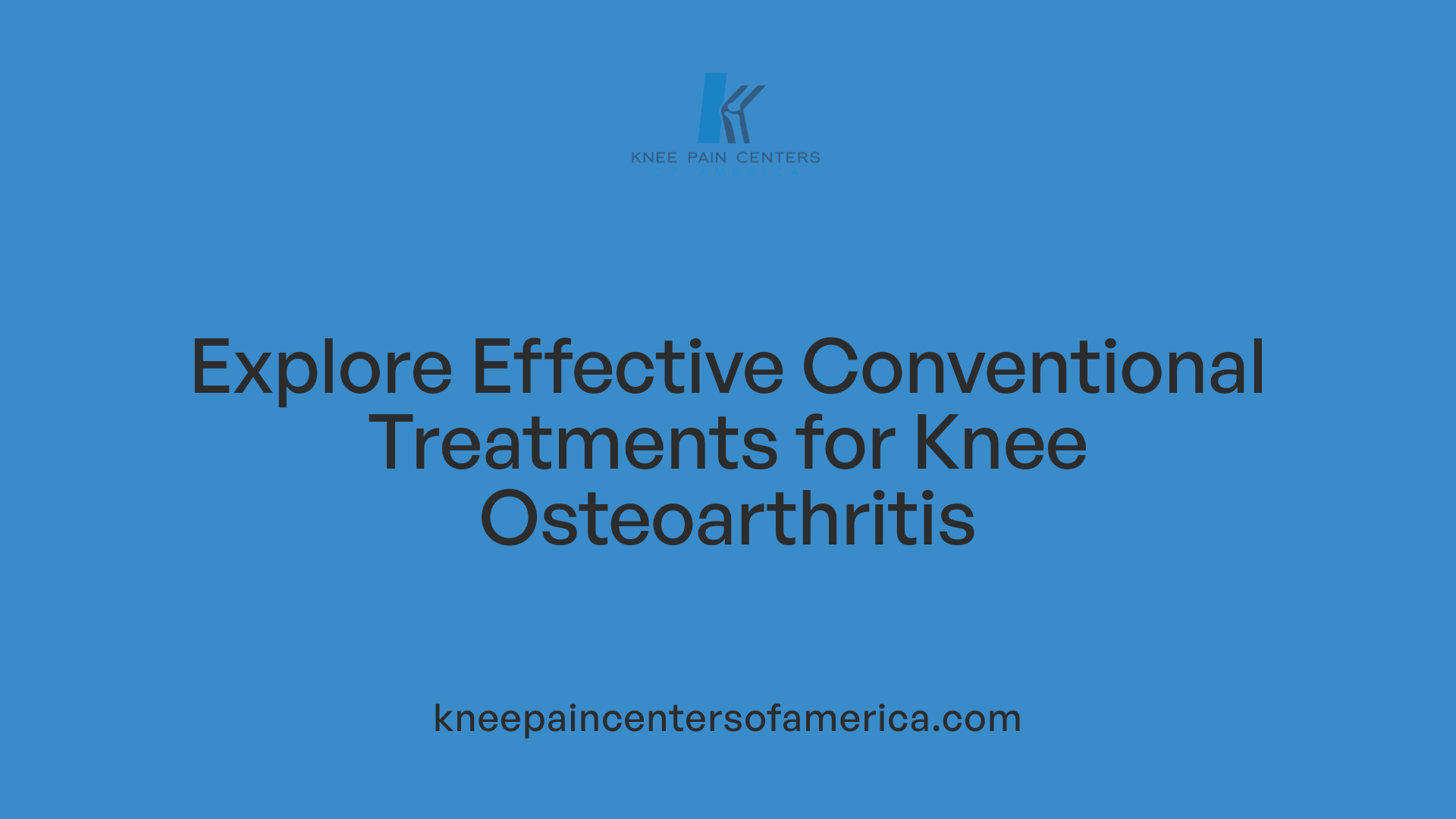
What are the common medical treatments available for knee pain and osteoarthritis?
Common medical treatments for knee pain and osteoarthritis focus on symptom management and improving joint function. Medications frequently used include acetaminophen and nonsteroidal anti-inflammatory drugs (NSAIDs) to relieve pain and reduce inflammation. Corticosteroid injections may also be administered for more direct joint inflammation control. Duloxetine, a medication that affects pain processing, is sometimes prescribed for chronic pain.
Physical therapy plays a significant role by strengthening the muscles around the knee, enhancing stability, and improving mobility. Tailored exercise programs help maintain joint function and may reduce stiffness.
For severe cases where conservative treatments are ineffective, surgical options such as knee replacement or arthroscopic procedures are considered to restore function and alleviate pain.
Lifestyle modifications complement medical treatments by supporting joint health. Weight management reduces stress on the knee joints, while low-impact exercises like swimming and cycling help maintain mobility without aggravating symptoms.
Together, these approaches create a comprehensive plan to address knee osteoarthritis and pain, aiming to improve quality of life and delay progression of joint damage.
The Role and Benefits of Physical Therapy in Managing Knee Osteoarthritis
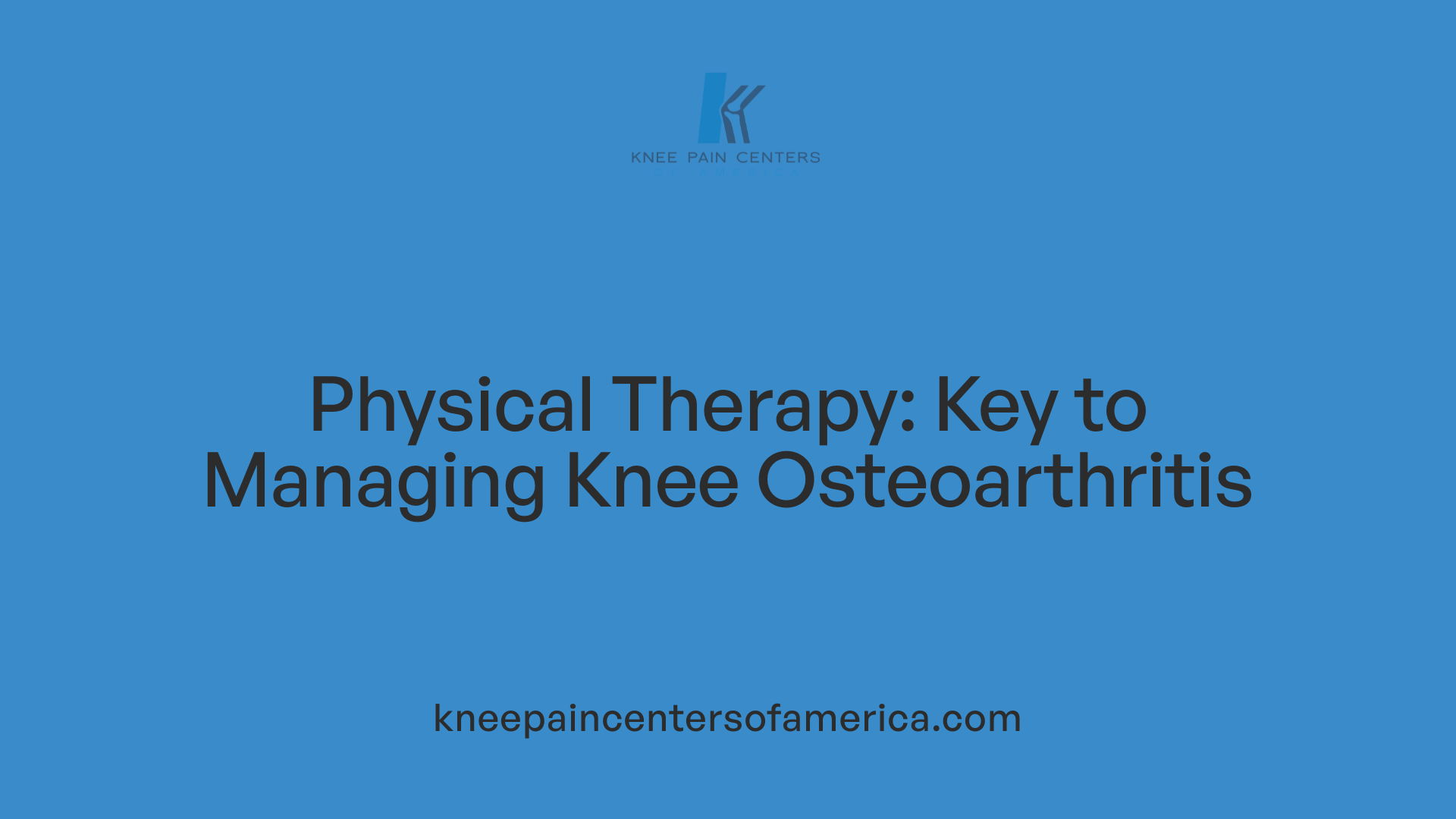
What role does physical therapy play in managing knee pain and osteoarthritis?
Physical therapy is a cornerstone in managing knee osteoarthritis by providing personalized exercise plans tailored to the patient's condition and needs. These exercises target improvements in joint range of motion, muscle strength, and flexibility, all of which help enhance overall joint function.
Manual therapy techniques, including joint mobilizations and soft tissue massage, are used to reduce pain and improve mobility. Physical therapists may also recommend assistive devices such as braces or walking aids to support joint stability and reduce stress on the knee.
Beyond symptom relief, physical therapy aims to slow the progression of osteoarthritis by strengthening surrounding muscles and improving movement patterns. This non-invasive approach can diminish reliance on medications and postpone the need for surgical interventions.
Additionally, physical therapy is cost-effective, serving as an accessible treatment option for many patients. It is also vital before and after knee surgery to prepare the joint and optimize recovery outcomes, enhancing long-term function and quality of life.
How PRP Therapy Works: Harnessing the Body’s Natural Healing Powers
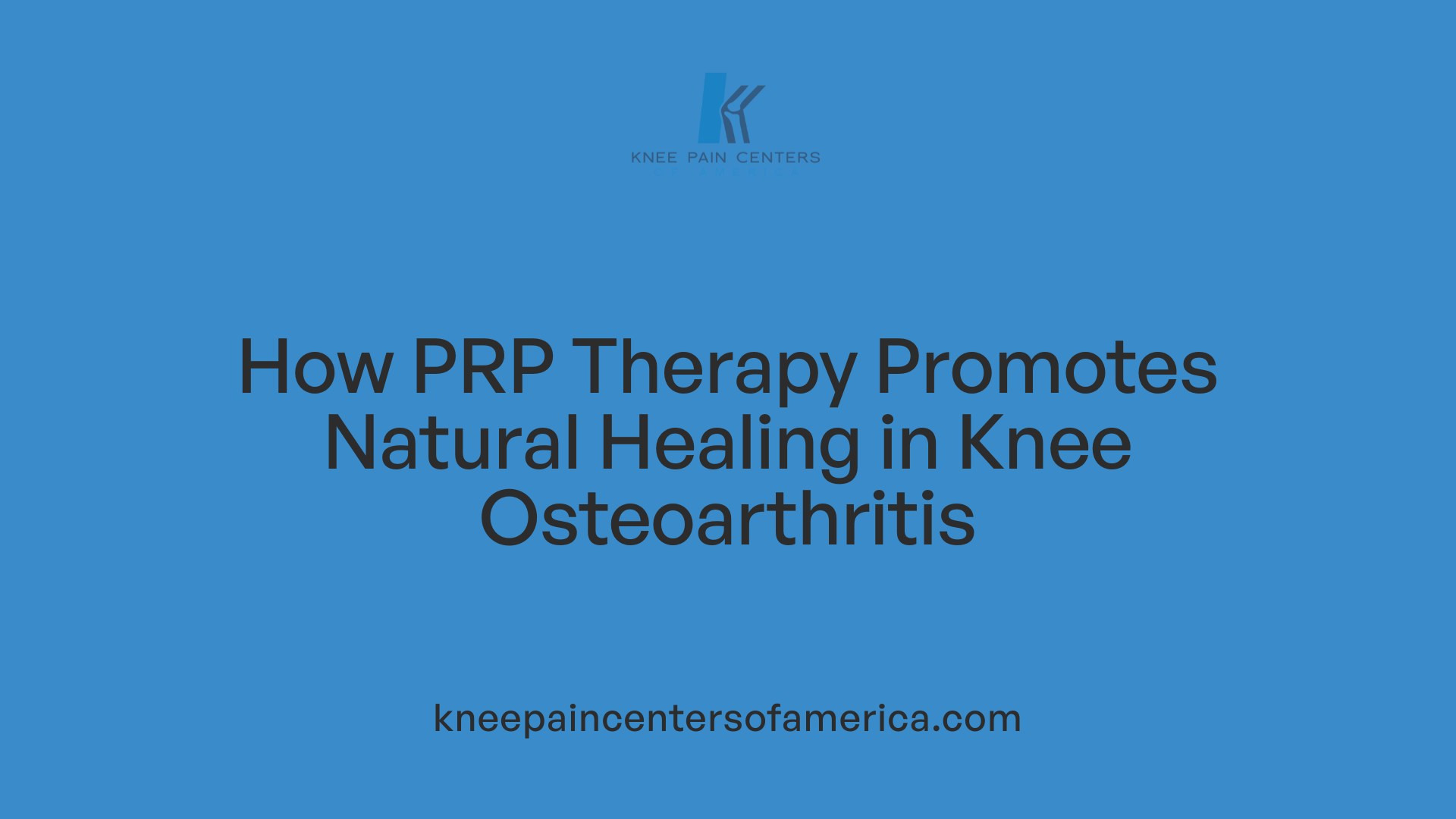
What is PRP Therapy and How is It Performed?
Platelet-Rich Plasma (PRP) therapy is an innovative treatment that utilizes a patient’s own blood to promote healing. The process begins with drawing blood from the patient, which is then spun in a centrifuge to separate and concentrate the platelets. This platelet-rich portion, known as PRP, contains a higher concentration of platelets than normal blood.
How is Platelet-Rich Plasma Prepared?
The preparation focuses on isolating platelets while reducing red blood cells to prevent oxidative stress. Typically, leukocyte-poor PRP (LP-PRP) is preferred for joint injections to minimize inflammation. Proper preparation is crucial to optimize healing effects.
What Role Do Growth Factors Play in Healing?
Activated platelets release numerous growth factors such as PDGF, TGF, IGF, FGF, and VEGF. These promote key healing processes: angiogenesis (new blood vessel formation), cellular migration, proliferation, and matrix deposition. This boosts tissue repair and reduces inflammation, particularly important in treating joint conditions like knee osteoarthritis.
Which Injuries and Conditions Can PRP Treat?
PRP therapy is often used for musculoskeletal problems including tendon injuries (like tennis elbow and jumper’s knee), ligament and muscle injuries, and joint issues such as osteoarthritis. These injections can also support wound healing after trauma.
Is PRP Therapy Invasive and What is the Recovery Time?
PRP injections are minimally invasive, typically performed during a 30-minute office visit. They generally involve less recovery time compared to surgery and can provide pain relief and functional improvements within weeks. This makes PRP an attractive option for those seeking natural, non-surgical healing methods.
Effectiveness and Clinical Evidence of PRP for Knee Osteoarthritis
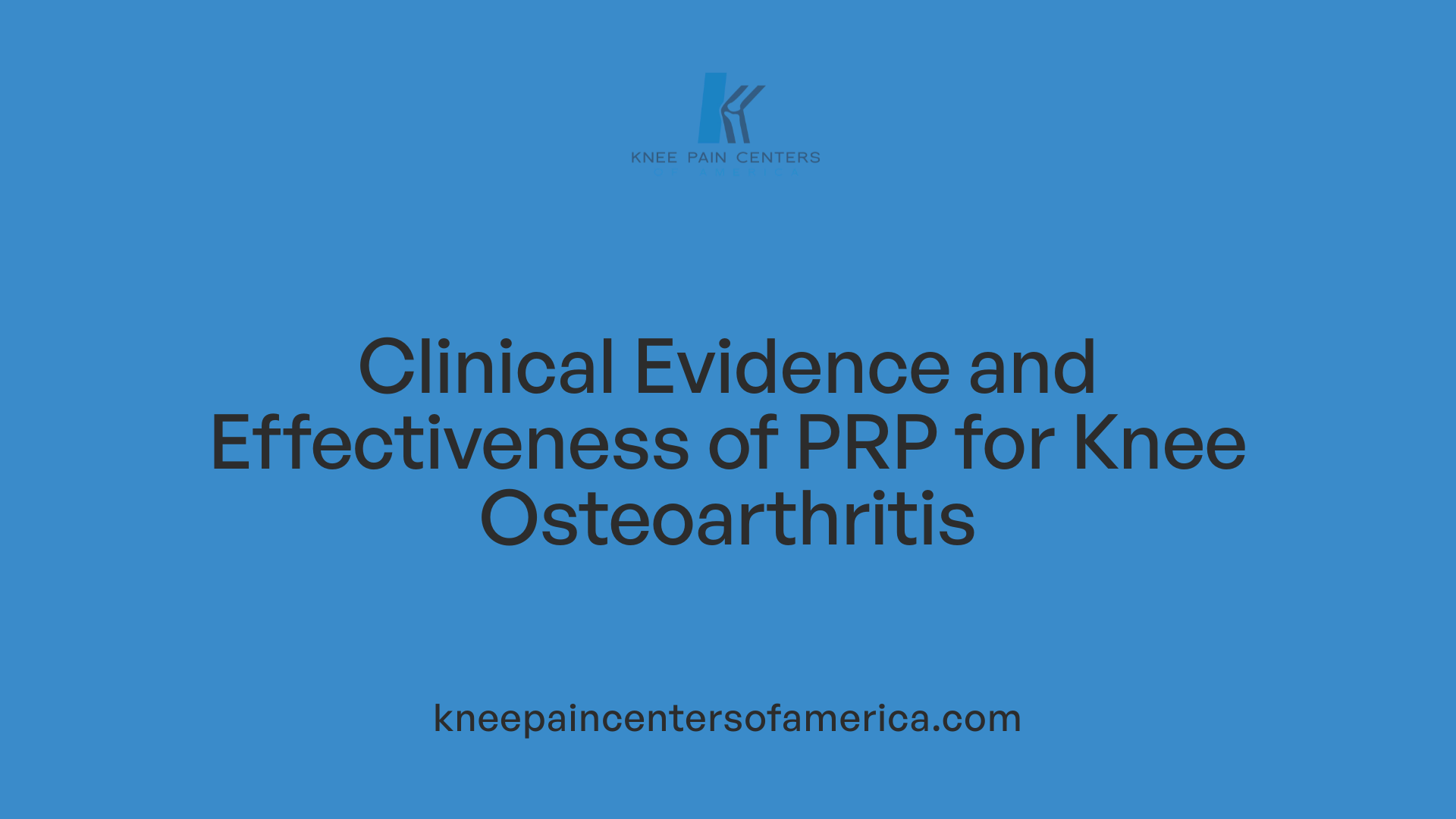
What do research findings say about PRP effectiveness for knee osteoarthritis?
Platelet-Rich Plasma (PRP) therapy has been studied extensively for knee osteoarthritis and shows promise as a regenerative treatment. Meta-analyses of 18 randomized controlled trials involving nearly 2,000 patients found that PRP injections significantly reduce pain and improve joint function compared to placebo treatments. These studies report improvements lasting from 6 to 12 months.
How does PRP compare with corticosteroids and hyaluronic acid treatments?
PRP tends to outperform corticosteroids and hyaluronic acid injections in both the extent and duration of pain relief for knee osteoarthritis. Unlike corticosteroids, which offer short-term relief, PRP often provides longer-lasting effects, especially beyond 3 to 6 months after treatment. Moreover, combining PRP with hyaluronic acid may enhance therapeutic benefits over using either treatment alone.
Why are outcomes of PRP therapy so variable?
One challenge in PRP research is the variability in preparation and administration protocols. Differences in platelet concentration, presence of leukocytes, activation status, and centrifugation techniques contribute to inconsistent results. Additionally, patient factors and injury types play a role. This variability has led to mixed findings and complicates standardization efforts.
Why is platelet concentration important in PRP treatments?
Higher platelet concentrations in PRP formulations (exceeding approximately 1,000,000 platelets/μL) have been linked to superior and more sustained improvements in pain relief and joint function. Concentrated platelets release growth factors that stimulate tissue regeneration and inflammation modulation, which are thought to underlie these beneficial effects.
How long do pain relief and functional improvements from PRP last?
Most patients experience noticeable benefits within 2 to 3 weeks post-injection, with peak improvements observed over a couple of months. Studies show that benefits in pain reduction and function often persist for 6 to 12 months, which may delay the need for surgery or other invasive treatments.
Emerging treatments like PRP offer a promising, minimally invasive option for knee osteoarthritis by harnessing the body's own healing capability. However, more research is needed to optimize protocols and validate long-term outcomes before widespread clinical adoption.
Safety Profile and Side Effects of PRP Therapy

How safe is PRP therapy, and what side effects might occur?
Platelet-rich plasma (PRP) therapy is considered a low-risk treatment primarily because it uses the patient’s own blood, making allergic reactions uncommon. This autologous nature significantly minimizes immune-related complications.
Common side effects are generally mild and include soreness, swelling, and bruising at the injection site. These symptoms often indicate that the body is initiating a healing response. Patients may experience discomfort lasting a few days but typically recover quickly.
Potential, though less frequent, risks include infection, bleeding, tissue damage, and nerve injury. However, these risks are relatively rare when proper sterile techniques and careful injection protocols are followed.
Compared to other interventions like surgery or corticosteroid injections, PRP carries fewer serious risks and a shorter recovery time, making it a safer, minimally invasive alternative.
Proper preparation of PRP is crucial to avoid adverse effects. This involves carefully concentrating platelets while minimizing red blood cells and leukocytes, as the presence of these can promote inflammation or oxidative stress. Ensuring correct processing reduces the chance of cartilage damage and improves overall safety.
In summary, PRP therapy is a biologically safe option with a favorable side effect profile, provided that preparation and administration adhere to recommended standards.
Integration of PRP with Other Knee Osteoarthritis Treatments
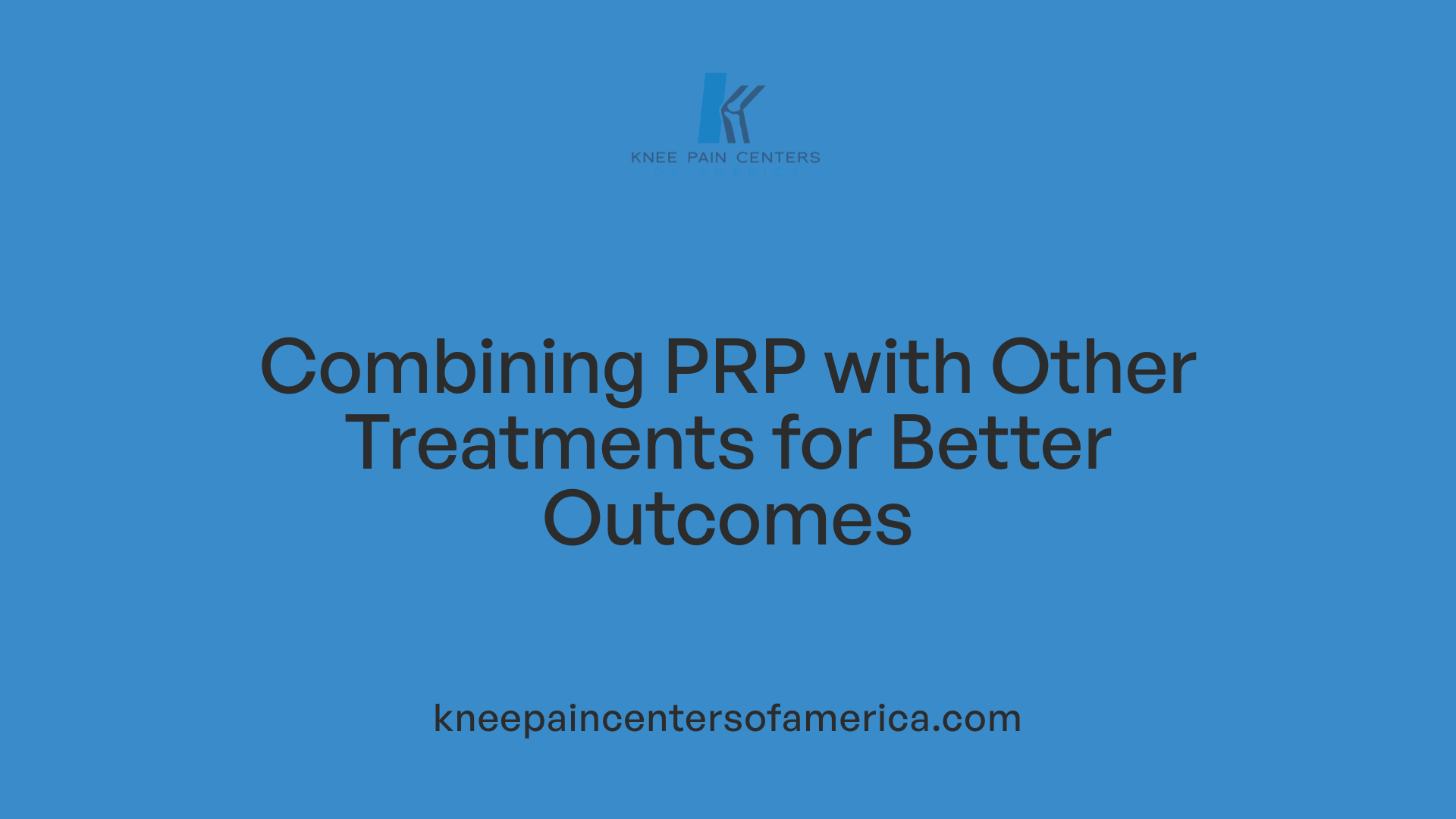
Combining PRP with hyaluronic acid and other therapies
PRP has been studied in combination with hyaluronic acid (HA) injections for knee osteoarthritis. While HA supplements and lubricates joint fluid to improve mobility, PRP contributes growth factors that stimulate tissue repair and reduce inflammation. Clinical trials suggest this combination may provide superior pain relief and improved function compared to either treatment alone, enhancing overall outcomes.
Potential to reduce medication reliance
By promoting natural healing processes and offering longer-lasting relief, PRP treatments may reduce dependence on pain medications and corticosteroid injections. Corticosteroids provide quick anti-inflammatory effects but their benefits tend to be short-term, whereas PRP’s effects often last between 6 to 12 months, potentially delaying the need for repeated drug administration.
Non-surgical alternative to delay knee replacement
As a minimally invasive procedure, PRP serves as a non-surgical option that can postpone the necessity for knee replacement surgery. Patients experience reduced pain and improved joint function with lower risk profiles compared to invasive procedures, making PRP appealing for those seeking conservative management.
Patient selection and factors influencing outcomes
Effectiveness of PRP depends on factors such as the severity of osteoarthritis, patient health, platelet concentration in PRP preparations, and adjunct therapies (e.g., shockwave or laser therapy). High-platelet concentration PRP formulations tend to yield more durable benefits, highlighting the importance of individualized treatment protocols.
Current clinical practice and recommendations
Despite promising data, PRP is often not covered by insurance due to variable evidence and lack of standardized protocols. Some professional groups recommend limited or cautious use, emphasizing the need for further rigorous studies. Clinics may prefer established treatments while monitoring ongoing research to better guide patient care.
How do corticosteroid and hyaluronic acid injections help manage osteoarthritis symptoms?
Corticosteroid injections rapidly reduce joint inflammation, providing quick pain relief, but effects are usually temporary. Hyaluronic acid acts as a lubricant to supplement the joint fluid, improving mobility and comfort. PRP may offer longer-lasting pain relief and promote actual tissue healing, and when combined with HA, these therapies can enhance patient outcomes more effectively than when used alone.
Limitations, Costs, and Future Directions for PRP Therapy
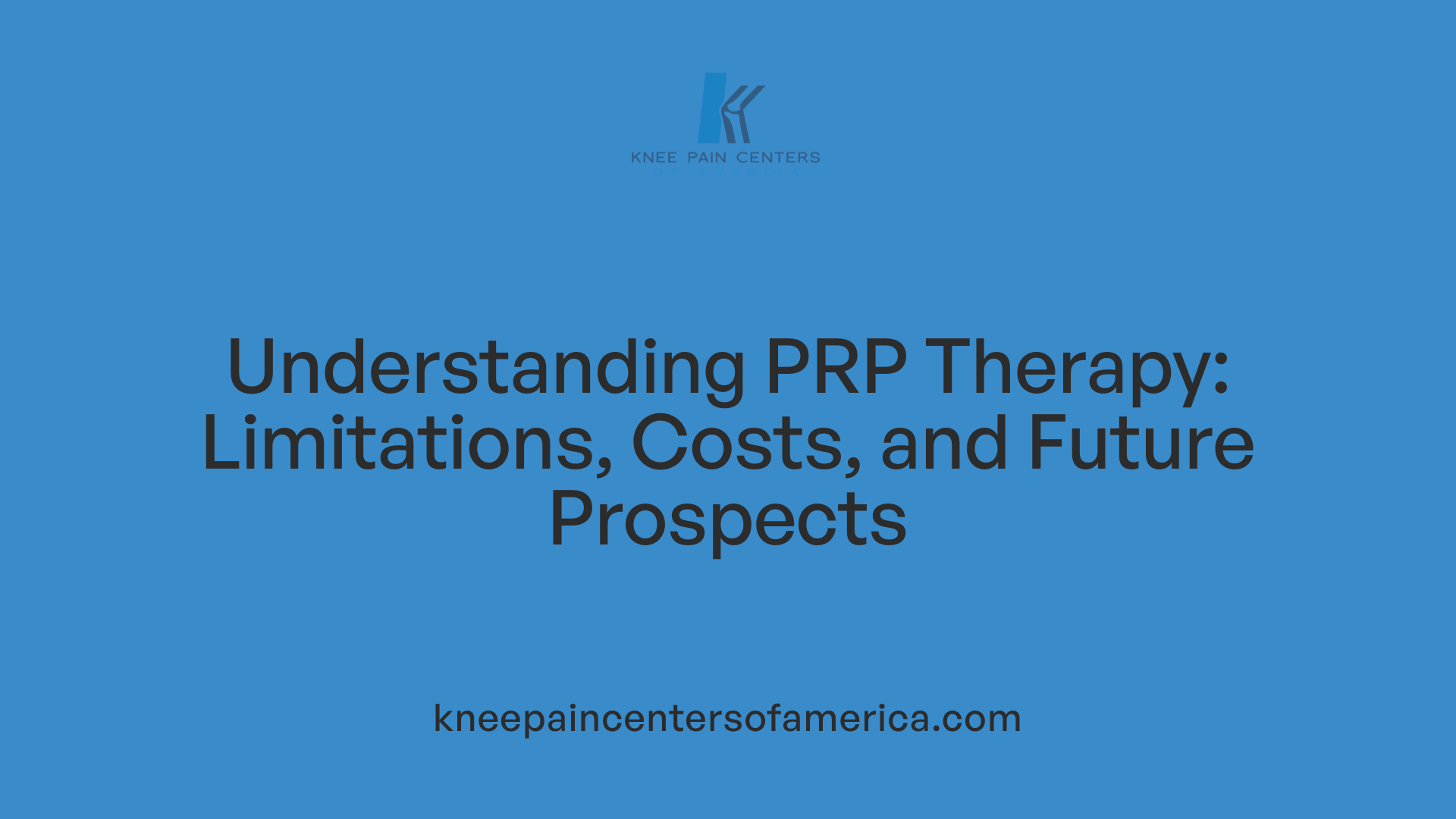
Variability and Lack of Standardization in PRP Protocols
PRP therapy faces significant challenges due to the wide variability in preparation methods and formulations. Differences in platelet concentration, presence of leukocytes, and whether PRP is activated externally contribute to inconsistent outcomes in clinical trials. Researchers highlight the need for standardized protocols to optimize treatment effects and reproducibility.
Mixed Clinical Trial Results and Professional Guidelines
Clinical studies on PRP's efficacy for knee osteoarthritis show mixed results. Some meta-analyses report clinically meaningful improvements in pain and function compared to placebo or hyaluronic acid, especially with high-platelet concentrations. However, well-designed trials published recently have questioned benefits, with some showing no significant difference from placebo. Consequently, professional organizations like the American College of Rheumatology generally recommend against PRP for osteoarthritis due to insufficient evidence, while others advise cautious or limited use.
Cost Implications and Insurance Coverage Challenges
PRP treatments typically cost over $1,000 per session and often require multiple injections. Despite their potential, these procedures are usually not covered by insurance or Medicare, presenting financial barriers to many patients. The high out-of-pocket expense combined with variable clinical effectiveness has tempered widespread adoption.
Research Needs and Potential for Standardization
Ongoing research is crucial to clarify PRP's clinical role by identifying optimal preparation techniques, platelet concentrations, and activation methods. Greater standardization in PRP formulation and administration could reduce variability in outcomes and strengthen evidence for its therapeutic use, especially in knee osteoarthritis.
Future Impact on Osteoarthritis Treatment Paradigms
Research explores how PRP's biological properties might stimulate long-term tissue repair and modify the joint environment, potentially delaying or reducing the need for invasive surgeries like knee replacement. Although current data are inconclusive, advances in PRP standardization and clinical trials may reshape osteoarthritis management, favoring regenerative approaches over solely symptom relief.
Research continues on PRP’s effectiveness and optimal preparations to overcome current limitations. Despite mixed results, PRP remains a promising option pending standardization. Cost and lack of insurance coverage are barriers, but ongoing studies may influence clinical acceptance and guidelines.
The Potential of PRP: A Promising Avenue for Knee Pain Management
Platelet-rich plasma therapy represents a novel approach to managing knee osteoarthritis by leveraging the body's own healing mechanisms. While conventional treatments remain foundational, PRP offers a minimally invasive option with potential to reduce pain and enhance function over several months. Current clinical evidence highlights both its promise and limitations, emphasizing the need for standardized protocols and further research. As science advances, PRP may become an integral part of comprehensive knee care, providing patients with a natural and potentially longer-lasting alternative in their fight against osteoarthritis pain.
References